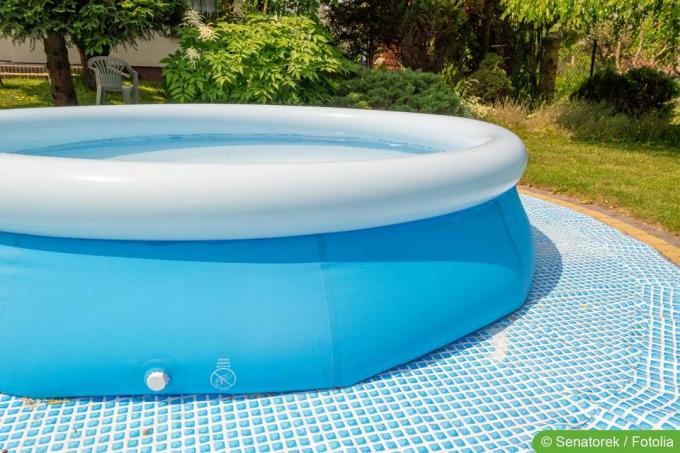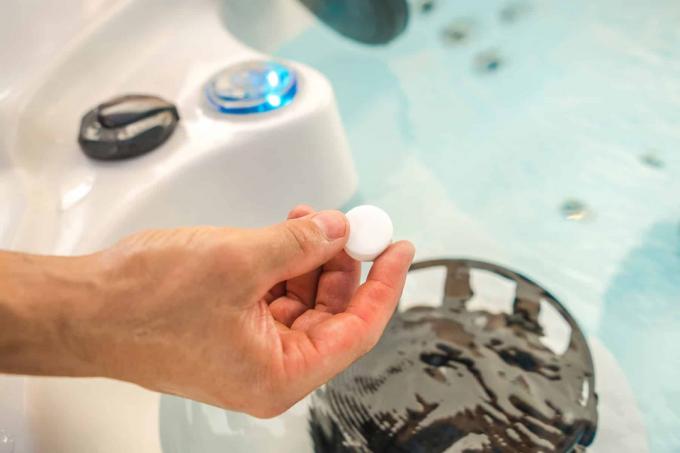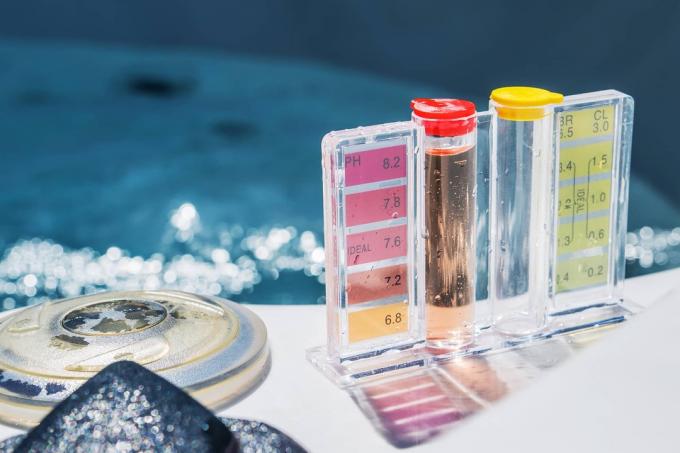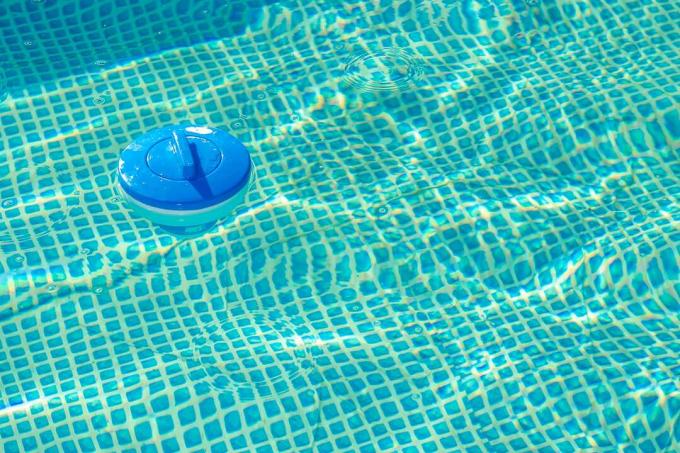

Table of contents
- dangers and disadvantages
- slope for pools
- Leveling slopes - instructions
- dig foundation
- To fill
- Frame
Setting up a pool on a slope is not impossible, but it does take some effort. It is therefore important to pay close attention to the requirements when applying.
dangers and disadvantages
A pool that is on a slope is exposed to various hazards. This includes:
- tipping
- leakage of water
- deformation of the pelvis
- uncomfortable walking in the pool
Accordingly, a flat surface must be created. However, this is also possible with a steeper slope in the garden.
slope for pools
The surface of a swimming pool should not have a gradient greater than one percent. This means that there can only be a one centimeter difference over a meter in length.
In the event of major bumps or slopes, compensation must therefore be made. Because the swimming pool should be on as level a surface as possible to prevent problems. The following step-by-step guide shows how it can work.
Leveling slopes - instructions

Various steps are required to ensure that a pool can be set up despite unevenness. These may differ slightly depending on the local conditions and may need to be adjusted.
dig foundation
Instead of leveling the entire garden, a foundation can simply be dug to create a level base for the pool. The following steps show how to do it:
Measure and stake out
The base area for the pool is measured and staked out. A thread can be stretched between the struts, which serves as a guide.
excavation
For small pools and low gradients, a spade is usually sufficient. For larger areas or large differences in height, a mini excavator should be used. This also makes sense for steeper gradients, since more earth has to be removed.
Clean
Foreign objects such as roots and stones should be removed. Otherwise, they can represent disruptive factors.
Level and compact
When a smooth surface has been created, the soil must be compacted and checked again. A vibrating plate or a flat vibrator, for example, helps here. In the case of smaller areas, it can also be sufficient to place boards or slabs on them and weigh them down or walk on them or jump on them several times.
A notice:
A mini excavator, like a flat vibrator, can be borrowed inexpensively from a hardware store. It makes the work easier and thus reduces the overall effort.
To fill
After compacting, equal parts of crushed stone, gravel and quartz sand can be poured into the foundation. On the one hand, this ensures that any overflowing water can drain off better. On the other hand, it evens out any unevenness that may still exist and the gradient. So that the filling is even, it should also be compacted.

If you want a more stable substructure, you can either lay out paving slabs, use Styrodur plates or concrete the foundation. However, concreting is only recommended if the property is owned. If the garden is rented or leased, the owner must first be asked.
Frame
In the case of a very steep incline, experience has shown that it makes sense to set up a frame. Among other things, this prevents the earth from sliding down and the pool from deforming or shifting. This poses a major risk, especially in the case of frequent rain, little planting or very loose soil.
Options for creating a frame or attachment include:
- stone wall
- gabions
- planting
- concreted lawn edging stones
But a solid wooden frame by the pool itself can also act as protection. A firmer frame is recommended for both inflatable and plastic frame variants.
Another advantage of this is that the frame can be used as a shelf or as a seat, for example. This results in numerous design options. A step-by-step construction as a bench or plants as a decorative backdrop – whatever you like is allowed.
Tip:
Since the frame may have to withstand a high weight, it should be concreted in and made of stable materials. In the case of rented properties, however, it is again necessary to obtain the permission of the owner first.
 Home editorial office
Home editorial office
Learn more about water in the garden

How quickly does chlorine break down?
How quickly chlorine breaks down in pool water is important information for a number of reasons. It is important to know which factors play a decisive role in the degradation rate. This guide shows which influences are decisive.

Too much chlorine in the pool: what to do?
If too much chlorine accidentally ends up in the pool or the chlorine value is inexplicably high, there are several measures you can take. This guide shows what can quickly and sustainably help and reduce the chlorine content.

Too much chlorine in the pool: swim anyway?
If too much chlorine has ended up in the pool, the question immediately arises as to whether bathing is still possible. What risks can this entail and what are the warning signs? Here are the answers.

Reducing chlorine levels in the pool: chlorine levels explained
Is the chlorine level in the pool too high and bathing is not possible? Then good advice does not have to be expensive, because the chlorine values can be easily reduced in several ways and thus brought into the optimal range.

Pool initial filling: initial chlorination dosage
When the pool is about to be filled for the first time, the question of initial chlorination also arises. When and how is it carried out and what dosage is correct. This guide shows step by step how to do it.

How much chlorine in 1,000 liters of water?
Chlorine can keep pool water clear or, as shock chlorination, remove cloudiness and green discoloration. The question of how the right dosage and the optimal values look like arises again and again. This guide provides comprehensive answers.
